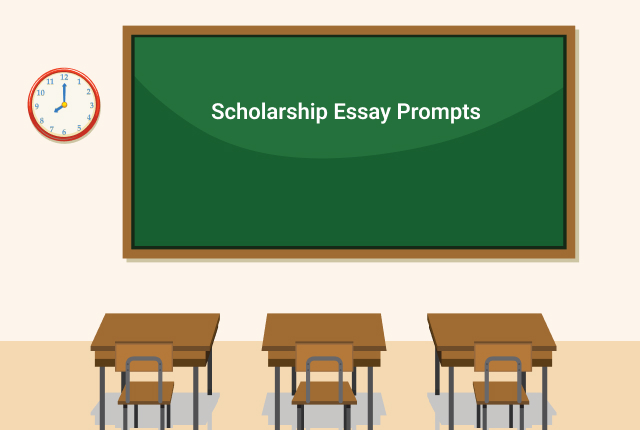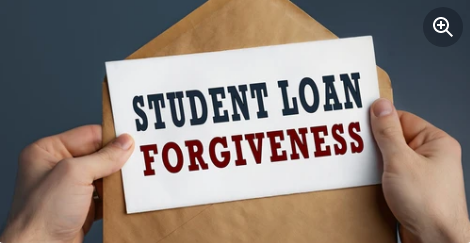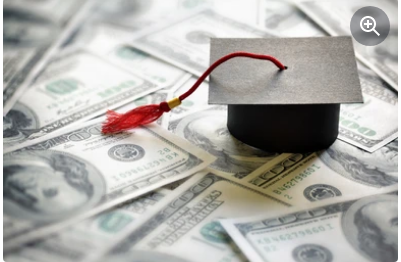Student Loan
Student Loan Doctor Review: Reduce Student Loans
Although completing medical school is a significant accomplishment, you can feel as though student loan doctor debt is a heavy burden that is keeping you from moving on.
According to the Association of American Medical Colleges, graduates from 2019 who took out loans had a median debt of $200,000 for their medical education (AAMC).
A lot of students also owe money from their undergraduate degrees.
Find out if you are eligible for these medical school loan repayment choices and loan forgiveness for doctors if you have the median amount of student loan debt or even more.
3 best ways to manage medical school loan repayment in 2024
Medical graduates frequently decide to forego paying back their college loans while they complete their residency. But doing so could end up costing you later:
Due to interest fees, the amount owed on your loans will increase over time. When it comes time to start making payments, you can owe hundreds of dollars more than you borrowed initially.
Even little payments made during your residency can help keep the overall interest costs under control.
Here are three suggestions for paying off medical school loans that you may utilize to better manage your debt without breaking the bank:
See also: How to Apply for Student Loan Forgiveness in Florida | Review
1. Refinance your medical school loans
Student loan refinancing is a tool you can use to lower your loan interest rates.
Refinancing allows you to obtain new loans from private lenders and use those funds to pay off your existing loans. New loans may have different repayment terms, including new minimum payments.
If you have a high-interest loan, refinancing can save you a significant amount of money over the life of the loan. In fact, this is a strategy some practitioners have used to save thousands of dollars over the life of their loans.
For example, if your average medical school debt is $200,000 at an interest rate of 7.00%, paying off the loan in 10 years on the Standard plan would cost you over $78,000 in interest payments alone.
On the other hand, if he could refinance his debt and get a loan with an interest rate of 5.50%, he would pay more than $60,000 in interest instead.
You can also explore refinancing options specific to your career path. For example, SoFi has refinancing products for doctors.
However, refinancing is not for everyone. There are potential drawbacks such as B. Loss of Certain Federal Loan Benefits. Before proceeding with your loan application, make sure you understand all the details of the refinancing.
Check out also: U-fi From Nelnet Student Loan Review: All You Need to Know
2. Enroll in an income-driven repayment plan
In a standard 10-year plan, the monthly payments for an average medical school debt of $200,000 at 7.00% interest is just over $2,300 per month.
Meeting this financial obligation can be a challenge for physicians fresh out of medical school, especially when first-year salaries for residencies are low.
If you have federal student loans, consider switching to an Income Managed Repayment Plan (IDR) to cover lower income payments.
These programs set monthly payments that match your income and living expenses and keep them affordable.
For example, under the Pay As You Earn (PAYE) plan, her first-year resident with a monthly income of less than $5,000 could have a monthly payment of less than $350, according to the AAMC.
Using an income-based medical school loan repayment plan is not the quickest or cheapest way to pay off that debt.
Remember that eligibility requirements and repayment structures vary. So make sure you understand each plan before committing to one.
Read also: RISLA Refinancing and Private Student Loans: Our Review
3. Negotiate a physician signing bonus
Award signings are a popular and growing number of employers use to attract the medical professionals they need. In fact, a doctor’s contract bonus amount hired through Medicus Firm, a medical recruitment firm, increased by nearly 13% in 2018 year-over-year.
For example, if he received a $20,000 bonus and used it to make an additional loan payment, an average medical school debt of $200,000 (assuming 7th percentile interest rates) would cost him over $18,000.
You can save interest. and standard). Depends on the fixed amount copay calculator.
If you know you want to join a medical practitioner or hospital rather than start your own office, check out these ways to get some extra student loan money.
Read your contract carefully to find out the details and terms of your employment bonus (for example, employment bonuses often require a commitment to remain with the employer for a specified period of time). Also, make sure that the bonus on signing up is just a bonus.
It’s not an advance or a loan that you pay back with your future salary. If you can negotiate a large signing bonus, it could be a good start to pay off your medical school loan.
You may be able to pay off a good chunk of your average medical school debt in one payment, which can significantly reduce the interest you’ll have to pay over time.
Read also: 15 Best Student Loan Forgiveness in Kentucky | Review
Medical school loan forgiveness options
In addition to clever repayment strategies, doctors may consider forgiving doctor student loans.
This can be a lifeline for doctors struggling with average medical school debt, or even more.
This is perhaps why, according to a survey by health research firm Merritt Hawkins, her 34% of doctors graduating from residencies in 2019 named student loan forgiveness as their top concern.
However, the trade-off is reduced employment opportunities. To be eligible for programs that offer physician credit waivers, you may have to work in a high-need area or a non-profit hospital.
Maintaining student loan forgiveness eligibility through these programs may limit your salary, specialty, location, and employer choices.
If you’re willing to make these sacrifices, the Student Loan Forgiveness Program may pay off in the long run.
1. Public Student Loan Forgiveness (PSLF) for doctors
Physicians whose work qualifies for public service may qualify for the Public Student Loan Forgiveness Program. This is largely determined by your employer.
Public service includes full-time employment with a 501(c)(3) tax-exempt nonprofit or government agency (many hospitals are).
This includes working in areas that are underserved or have a high need for medical professionals.
Borrowers are required to make 120 payments (monthly payments for 10 years) while doing PSLF eligible work. The federal government has since waived its remaining debt.
2. Military programs for medical school loan repayment assistance
Military chapters provide educational support to medical students who are military personnel.
However, doctors who are already working with a doctorate can also register for military service and receive research grants.
Some of these benefits can be combined, but others are an either/or decision. Each of them can pull off most of the average medical school debt.
Familiarize yourself with these programs and their service requirements before signing up.
3. Army doctor student loan assistance
There are several options for Army Physician Student Loan Repayment Assistance to help medical students manage their student loans.
Approved residence. The Active Health Professions Loan Repayment Program provides up to $120,000 for medical school loan repayments.
To qualify, a doctor must be in active service, and benefits are paid in the form of $40,000 to him in her three annual payments.
The Health Professionals Special Pay Bonus Program provides up to $50,000 annually to both active duty and Army Reserve physicians who have completed qualifying specialty training.
See also: How is a Student Loan Different from a Scholarship?
4. Navy medical school loan repayment assistance
Military personnel serving as Navy physicians may benefit from similar incentives. Here are some help options for repaying Navy medical loans:
The Medical Profession Loan Repayment Program (HPLRP) allows you to pay up to $40,000 annually directly into medical school loans. Federal income tax (usually around 25%) is deducted. Open to medical students or Navy residents and physicians.
The Navy Financial Assistance Program offers annual and monthly scholarships to qualified physicians and dentists, but amounts are not specified.
His enrollment bonus for practitioners offered by the Navy is also impressive. Depending on your specialization and experience, it can be as high as $400,000.
5. Air Force medical school loan assistance
The Air Force primarily helps its members fund medical schools through its Medical Professional Scholarship Program. However, this applies mainly to students who have not completed their studies.
However, the Air Force’s Financial Assistance Program (FAP) helps Air Force doctors pay off medical school debt. Similar to the Navy program, he is offered a $45,000 stipend for a one-year stay and a $2,000 monthly stipend.
Upon completion of the residency, in addition to one year of service, he must also serve one year for each year in which he receives FAP funding.
Read also: How to Apply for Student Loan Forgiveness in Florida | Review
6. Indian Health Services Loan Repayment Program
Indian Health Services (IHS) is a federal Native American and Alaska Native health program that provides a loan repayment program for medical professionals.
People who take advantage of this program reside at his IHS facilities where they are most in need.
In exchange for a two-year commitment, the IHS Loan Repayment Program will repay up to $40,000 in medical school loans. Doctors can extend the contract for additional student loan benefits until the debt is paid off.
7. National Institutes of Health Loan Repayment Programs
While many programs offer repayment assistance to practitioners to pursue medical degrees, the National Institutes of Health (NIH) offers financial incentives to research health care workers. offers.
To be eligible for the NIH Loan Repayment Program, participants must agree to a minimum two-year contract to conduct research funded by a US government agency or non-profit organization.
participants are eligible for $50,000 in annual student loan repayments. It also applies to most student, graduate, and medical school debts.
These programs allow health researchers to receive student loan assistance while employed by NIH (internal programs) and eligible organizations outside of NIH (external programs).
NIH also has a loan repayment program for clinicians. One supports clinicians from disadvantaged backgrounds and the other supports clinicians conducting research on health inequalities.
8. National Institute on Minority Health and Health Disparities Loan Repayment
This program provides physician health professionals with loan repayment assistance of up to $50,000 annually.
A minimum of two years of health disparity or commitment to clinical research is required to qualify.
This program has two of her tracks. Loan Repayment Program for Health Disparities Research. Conducting clinical studies
FAQs
Although working as a doctor can be gratifying, the field is typically burdened with school loan debt. Without taking into account their undergraduate tuition, the Class of 2021 had a median medical school debt of $200,000, according to the Association of American Medical Colleges (AAMC).
Although working as a doctor can be gratifying, the field is typically burdened with school loan debt. Without taking into account their undergraduate tuition, the Class of 2021 had a median medical school debt of $200,000, according to the Association of American Medical Colleges (AAMC).
debt from student loans for doctors. Any company agreeing to pay off a physician’s student loan debt is unusual, in my opinion. Less than 20% of the contracts I’ve read include payments for student loans, I’d think. There is also probably a limit on how much the organization will pay. 1
Conclusion
If you can save money on student loans by lowering interest rates, refinancing is a smart move.
However, federal loan refinancing is private, so federal loan refinancing is not recommended if you are pursuing a federal medical college loan forgiveness program.
Be careful not to sacrifice your loan forgiveness option before applying for refinancing.
However, if you have a personal loan, refinancing may make sense as you won’t be eligible for federal loan forgiveness anyway.
References
- Forbes.com – how student loan doctor is helping to close the wealth gap
- Chellelaw.com – do hospitals pays off student loans for doctors
Editor Recommendation
- How to Apply for Student Loan Forgiveness in Michigan | Review
- How to Apply for Student Loan Forgiveness in Florida | Review
- 15 Best Student Loan Forgiveness in Kentucky | Review
- How is a Student Loan Different from a Scholarship?
- How to Make Money from Student Loan Stocks
- Alaska Student Loan And Financial Aid Programs | All You Need to Know






